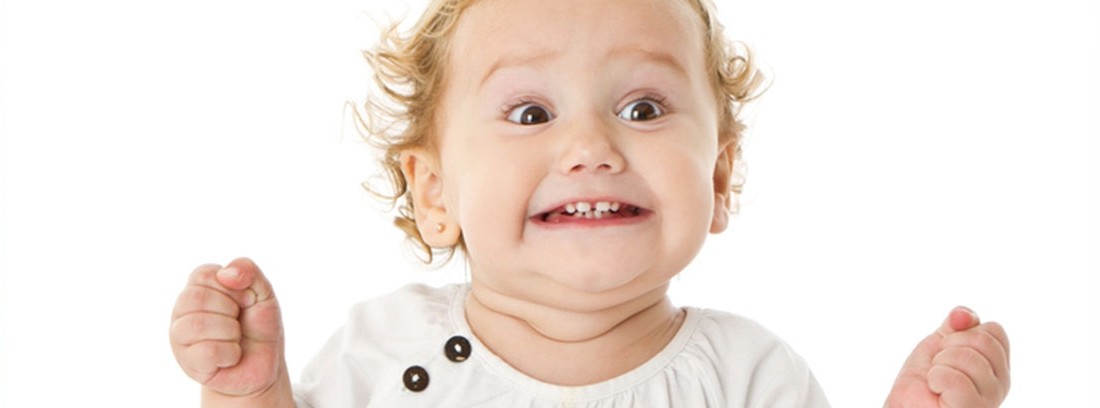Child anxiety

Anxiety disorders are very common in childhood and adolescence. About, 13 out of 100 children and adolescents between the ages of 9 and 17 experience some type of anxiety disorder. Girls are more affected than boys, and about half of children and adolescents with these disorders have a second anxiety disorder or another mental or behavioral disorder, such as depression. Additionally, anxiety disorders can coexist with physical health disorders that need treatment.
Most children enjoy going to school, but some are shown terrified and try any tactic to avoid attending. Parents should recognize that children who are always looking for an excuse to may suffer from some degree of anxiety.
Symptoms of childhood anxiety
The child anxiety It can be presented in many ways:
- Constant thoughts and fear about their own safety and that of their parents.
- Constant desire to miss school.
- Affective disorders: extreme shyness, feeling of inferiority ...
- Motor disorders: stuttering, tics, sleepwalking, thumb sucking ...
- Cognitive disorders: poor school performance, poorer concentration and memory.
- Psychosomatic manifestations: insomnia, enuresis, bronchial asthma, anorexia, headaches, vomiting, abdominal pain ...
- Too much dependence on parents.
- Panic or tantrums when separating from parents.
- Sleep problems or.
The most common anxiety disorders in children
Generalized anxiety disorder
Children and adolescents with this disorder are extremely concerned about their activities, be it their academic performance, sports performance or even being punctual. These types of people are usually very responsible, feel tense and need a lot of security. They may complain of stomachaches or other psychosomatic conditions with no apparent physical cause.
Separation anxiety disorder
Children with this disorder often have difficulty leaving their parents to go to school, stay with a friend, or be alone. Often they “cling” to their parents and have trouble falling asleep. Separation anxiety disorder can be accompanied by depression, sadness, or fear that a family member will leave or die.
Phobias
Children and adolescents with phobias have excessive unreal fears of certain situations or objects. Many phobias have specific names, and the disorder can focus on animals, storms, water, high places, or specific situations such as being confined in a confined space.
Panic disorder
Repetitive ""s in children and teens without an apparent cause are signs of a panic disorder. They are characterized by being periods of intense fear accompanied by a strong heartbeat, sweating, dizziness, nausea, or a feeling of impending death. The experience is so terrible that they live in fear that they might have another attack. Children and teens with the disorder often do anything to avoid the situation that triggers another attack. They may even not want to go to school or be separated from their parents.
Obsessive-compulsive disorder
Children and adolescents with obsessive-compulsive disorder are caught in a pattern of repetitive thoughts and behaviors. Although they may recognize that these seem pointless and traumatizing, they are very difficult to stop.
Post-traumatic stress disorder
Children and adolescents can develop post-traumatic stress disorder after having experienced an extremely stressful event, such as physical or sexual abuse, witnessing a violent event or experiencing a disaster.
Treatment
If you suspect an anxiety disorder, you should consult your pediatrician or psychologist. They have a wide medical staff of specialists in child psychology, and they also have a 24-hour Pediatric Guidance Service available for any consultation related to the health of their children.
Behavioral treatments are very important, but also family therapy or the use of relaxation techniques to manage stressful situations, such as yoga.
In the most serious cases, where social relationships are greatly affected or the degree of anxiety is very high, medication can be resorted to.
You have doubts? Sign up for Savia, MAPFRE's digital health services platform that allows you to speak for free by chat or video consultation immediately with a doctor.
In addition, you can buy a specialized session for early ages to consult and solve the problems that concern you most in your children.
SIGN UP FREE
- Anxiety disorders are very common in childhood and adolescence.
- Constant fear of self-safety, extreme shyness, or tics are typical manifestations of childhood anxiety.
- In addition to proper treatment, family therapy or the use of relaxation techniques are essential to manage stressful situations.
(Updated at Apr 13 / 2024)